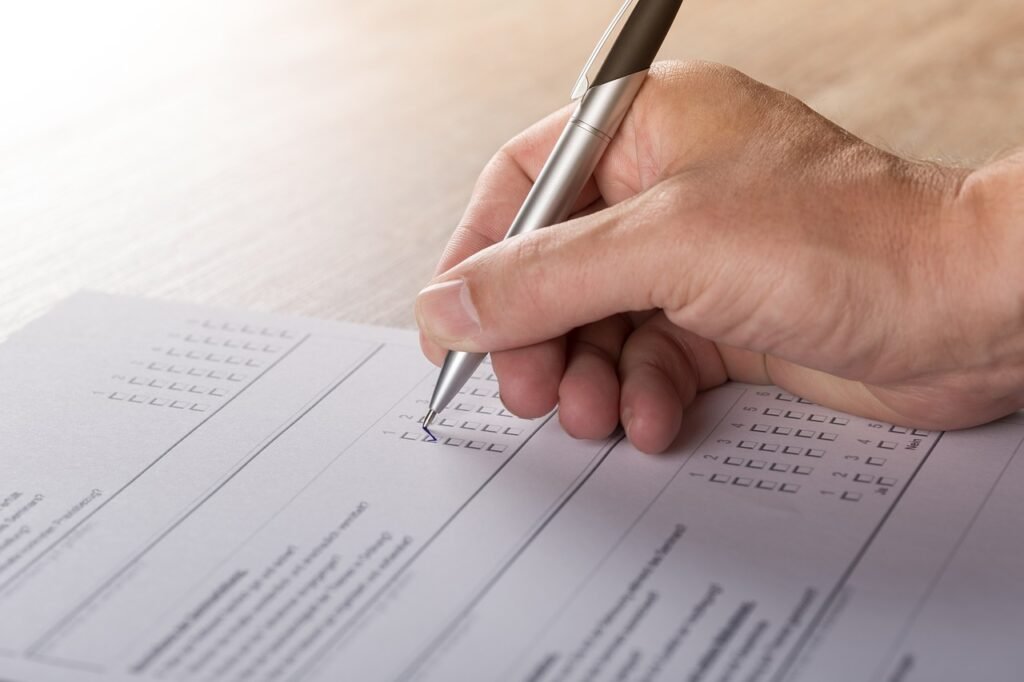Article by Shreyas Nair from WinSavvy’s legal research team. Here’s his LinkedIn bio for more information on him.
This article provides in-depth information on –
- What is a SubLease
- How a Sub-Lease Works
- Legalities Surrounding Subleases
- Types of Subleases, and
- How to Draft a Sub-Lease Agreement
A sublease occurs when an existing tenant re-rents property to a new third party for a portion of the tenant’s current lease contract. Subleasing may or may not be allowed under the terms of the original lease, and it may be subject to extra limitations imposed by the jurisdiction.
Even if a sublease is permissible, the original tenant is still responsible for the lease agreement’s responsibilities, such as monthly rent payment.
What Is a Sublease? – An Overview
A sublease is a legal contract between a tenant and a subtenant to rent a residential or business space for a set length of time.
In a sublet, the property owner rents to a tenant who wishes to leave without violating any lease conditions but still paying rent. A sublease agreement allows the tenant to rent the property to a subtenant.
How a Sublease Works
A lease is a contract between a property owner and a tenant that conveys the owner’s rights to exclusive possession and use of real estate property to the tenant for a certain period of time. The lease specifies the duration of the contract as well as the amount of rent to be paid by the tenant. Tenancy refers to the tenant’s legal right to hold the property. When a tenant sublease, they transfer a portion of their legal tenancy to a third party as a new tenant.
Subleasing is possible unless the first lease specifically prevents it. However, in most cases, the tenant must contact the owner and receive consent before entering into a subletting arrangement. The original lease may include control over the subletting process, providing the owner some say over who uses and/or occupies their property.
A tenant who sublets property must recognise that doing so does not relieve them of their duties under the original contract.
The renter is liable for the payment of rent as well as any repairs or damage to the property.
That instance, if a new subtenant fails to pay rent for three months, the original tenant who subleased the property is accountable to the landlord for the unpaid rent amount plus any late fines. As a result, the subtenant is responsible to the original tenant for any overdue rent.
#1. Legality of a Sublease
Sublease agreements are legal. Subleasing is typically acceptable by law if your present legal arrangement does not expressly prohibit it.
Many regulations and lease agreements, however, demand that you seek your property manager’s formal approval and authorization before subleasing your property.
The length of time the renter can keep the property would be specified in this agreement. In legal terms, the tenant’s right to use the property is limited to the life of the contract’s duration provision.
Subleasing occurs when a tenant enters into a separate arrangement with a third party to transfer a portion of the entire real-estate property.
Many territories and states have legislative provisions that govern this type of subleasing.
- The original tenant must consent to subleasing, and control over subleasing/subletting must be stated in the initial contract between the owner and the tenant.
- The tenant must be aware that subleasing/subletting does not relieve him of his obligations to the original owner, and the original tenant retains all responsibilities and obligations to the original owner in accordance with the terms of the original lease agreement.
- Legally, commercially, or otherwise, the original property owner may not have any interactions with the sub-tenant. Under various state regulations, even sub-lease agreements must include the ownership names as the original owner and not the renter who sublets the property.
Related Reads:
- How to Register an LLC in the US
- All the 9 Steps in a Merger and Acquisition
- Real Estate Laws in New York that Developers Must Know of
- Real Estate Laws in California that Developers Must Know of
#2. How to protect yourself as a sublessee?
Some contracts ban subletting, while others need the landlord’s formal consent before the renter may sublet.
If your landlord refuses to negotiate, you might look into your state’s subletting rules. Some states and towns have regulations that prohibit landlords from preventing eligible renters from subletting.
Inspect your subtenant.
Don’t just accept a friend’s or relative’s word for it that this individual is fantastic. Examine the references. Conduct a background check. Do your homework to verify that you are hiring someone who is responsible and financially sound.
Execute a subletting agreement.
There are example agreements available online, but you may speak with a lawyer. Your subletting agreement should explicitly state how long you’ll be subletting the space, how much rent you’ll be charging, when rent is due, and how the property should be kept.
Collect a security deposit.
A security deposit might assist cover any damage that occurs while the space is occupied by someone else.
#3. How to protect yourself as a sublessor?
Don’t Sublease to just anyone
You get into a legal agreement with the individual with whom you select to sublease once you sublease. You are also accountable if the subtenant fails to pay their rent or causes property damage.
Make sure you properly investigate your prospective subtenant by verifying their income, doing a credit check, and contacting their prior landlords. Use the same application screening technique that your landlord used on you to apply for the rental property.
Don’t Assume You Can Charge More
It’s quite tempting to charge your subtenant more rent than you pay your landlord. In general, you are free to charge whatever you want.
However, in rent-controlled places such as New York and San Francisco, there are local rules that restrict you from charging your subtenant more rent than you pay your landlord under the lease agreement. You are not authorised to benefit from the rental unit owned by your landlord.
Check your local regulations to see whether charging more is legal in your city and state.
#4. Types of Subleases
There are several sorts of subleases, including sublets. Leases are not the same as sublease agreements since they transfer legal and financial duty to another party.
A. Net Lease Absolute
The tenant bears the whole burden of an absolute net lease, including insurance, taxes, and upkeep. The absolute type is frequent in single-tenant systems, when the landlord constructs dwelling units to meet the demands of a renter. The proprietor hands over the finished apartment to the renter for a certain period of time.
B. Triple Net Lease
The triple net lease is related with three expenditure categories: insurance, maintenance, and real estate taxes. These expenditures are also known as pass-through or operating expenses since the property owner passed them all on to the renter as rent excesses. The excesses are sometimes referred to as taxes, insurance, and common area.
C. Gross Lease
The property owner bears the whole burden under the modified gross lease. According to the conditions, the owner is responsible for all insurance, property taxes, and common area upkeep. The tenant, on the other hand, is responsible for cleaning, utility, and interior maintenance expenditures.
The lease agreement also states that the owner is responsible for the roof and other structural components of the building. However, because the owner bears a major amount of the tenancy’s expenditures, the monthly rates are greater than for other forms of tenancies.
D. Lease with Full-Service
The full-service lease, as the name implies, covers the majority of the costs associated with building operation. However, there are a few exclusions, such as data and phone charges. Otherwise, the property owner is responsible for the remaining expenditures, which include common area upkeep, taxes, interior, insurance, utility, and cleaning charges. As a result, the monthly cost is slightly higher, and such leases are prevalent in large multi-tenant apartments when partitioning a building into smaller units is impracticable.
#5. How to Draft a Sublease Agreement
Renting a property may contain various dangers that all parties involved should be aware of. Once a rental method has been established, a Sub Lease Agreement is the best way to proceed.
The landlord provides all of the terms for renting their property to the tenant in this agreement; these terms should be drafted with the landlord’s best interests in mind and in an easy-to-understand format. However if you are a lessee, you can try and negotiate a better agreement for yourself.
Related Reads:
- How to Make a Contract by Yourself – 15 Essential Tips by Lawyers and Business Experts
- How to Create an Agreement – The Definitive Guide
Key Terms of a Sublease Agreement
For a sublease agreement to be legally binding, the important elements must be included. Every contract is distinct. However, there are certain similarities between each document that you should be aware of.
The following are the essential terms of a sublease agreement:
- Location and description of the property
- Name and address of the original tenant
- Name and address of the sub-tenant
- The start and end dates of the sublease
- The terms and conditions of the original lease
- The amount of rent due
- The frequency of rent and payment options
- Acknowledgements of the parties
In addition to fundamental provisions, there are sublease clauses that will safeguard your financial and legal interests even more.
a) Describe the Premises
The first step in writing a sublease agreement is to describe the property and identify the address. It is critical to specify if the sub-tenant will rent a single room or the complete rental unit.
b) Name the Tenant and Subtenant
In the sublease agreement, provide the names of the original tenant and the new subtenant. If possible, try to add in an affidavit by the parties.
c) Outline the Term of the Sublease
Measure the time you want to sublease the property to your subtenant. This is referred to as the “term” of the sublease.
A subtenant is not required to sublease the rental property throughout the duration of the original tenant’s agreement. For example, the sublet agreement might be month-to-month or for a defined period of time.
d) Explain the Details of the Original Lease
Any provisions included in the original lease agreement must be made known to your new subtenant. Include details in the papers, such as if pets are allowed on the property or smoking is permitted in the rental unit. A general statement stating that the sublease and subtenants must adhere to the conditions of the original lease is also sufficient.
e) Determine the Rent Amount
The original renter is accountable to the landlord if the sub-tenant fails to pay rent or causes damage to the property. If a subtenant violates a sublease agreement, the original tenant is fully responsible for resolving the issue.
Essential Clauses of a Sublease Agreement
a. Severability Clause
This is one of the most important terms, and it must be included in your lease to avoid future issues. A severability provision states that if a court rules that a portion of your lease is inapplicable, the remainder of the lease agreement will stay in effect.
b. Joint and Several Liability
This is another key item to include in your lease if you want to ensure that you get paid when you need to. A rent responsibility provision stipulates that renter are jointly liable for paying the whole amount of rent, even if one of the parties refuses to pay their portion in a given month.
c. Access to Premises (Right to Entry)
Keep in mind that when you sublease your property to a renter, you are also handing them possession of it. However, in an emergency, you may still need to access the location.
In these scenarios, you must draught a clause outlining the conditions under which you may enter, how much notice you will provide prior to your visit, and so on. Typically, you limit your visits to normal hours and schedule the notifications 24 hours in advance.
d. Use of Premises
This clause specifies how the tenant may utilise your property. Normally, the premises should only be inhabited by the persons mentioned on the agreement; this also includes normal maintenance operations such as cleaning and grass mowing.
The easiest approach to guarantee that tenants take care of your property is to clarify your usage rules.
e. Rent Due Date and Late Fees
You must be as specific as possible about the payment terms. In this section, you must provide the rent due date, the grace period for late payments, and the “penalty” amount that you will charge your renters for late payments.
Without this condition, you may have difficulty collecting late payments, so make sure you look through all of the specifics completely.
f. Sublet Rules/No-Subletting Clause
If you want to prevent problems with your tenants, you must establish your subleasing conditions. You must specify in the lease agreement, if you do not want your renters to sublease your property. Otherwise, your renters may sublease the property without your knowledge. In this instance, you could terminate the lease, but you won’t be able to penalise them for it.
That’s it. If you have any questions, feel free to drop it in the comments. If you are struggling with drafting your rental agreement or sub-lease agreement and want us to help you out, feel free to book a meet here.
Read Next:
- All About a Stock Purchase Agreement as per US Law
- The Definitive Guide to a Share Purchase Agreement: An International Guide
- The Definitive Guide to Finance Lease: All About Lease Financing




















